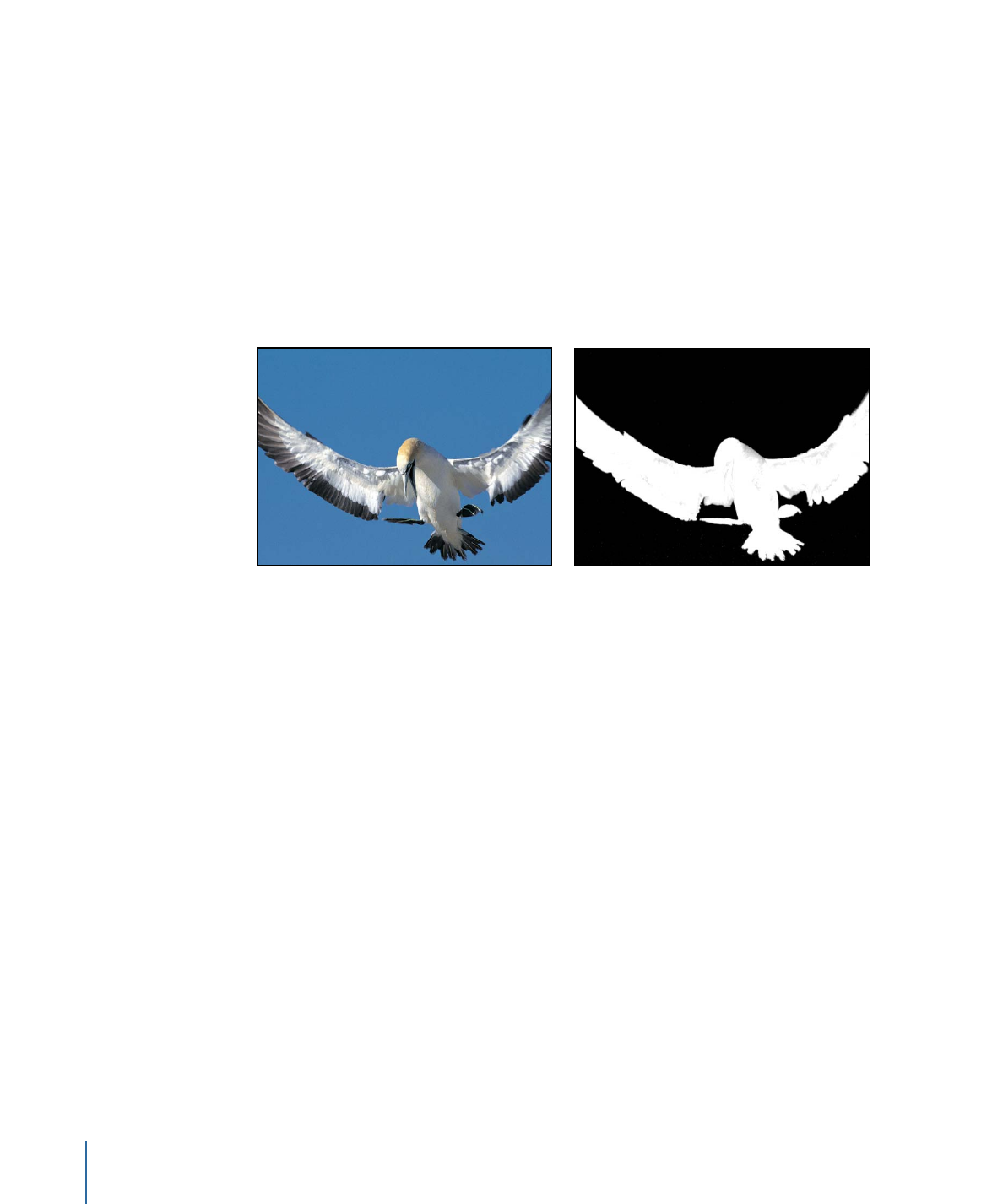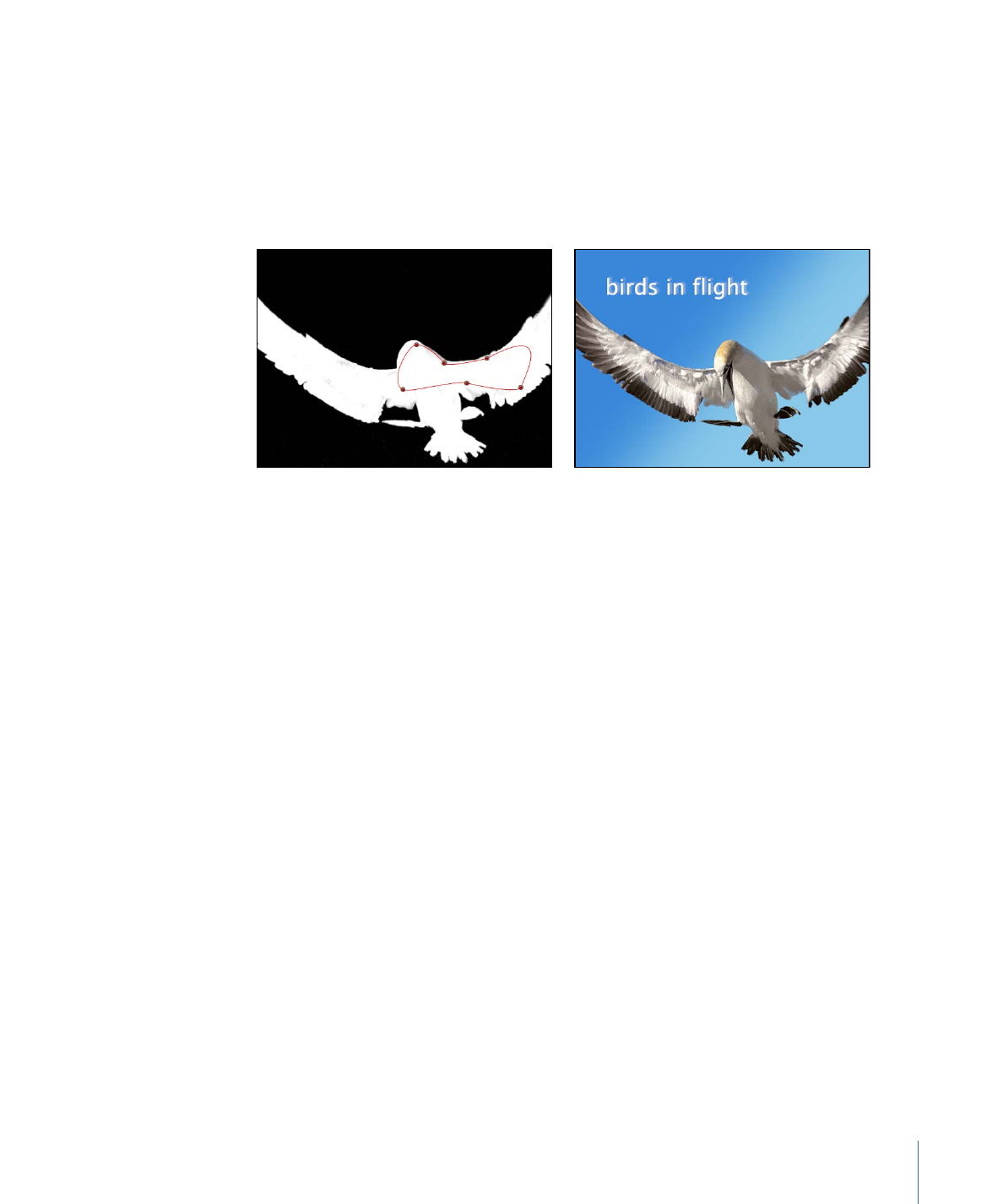
Holdout Masks
Sometimes, while pulling a key, you lose part of the image you’re trying to keep. This can
happen when the color of the subject’s clothing is too close to the color of the background
being keyed out, or when you need to use keying values that are too aggressive. In this
example, small parts of the bird’s head and wings are getting removed with the key,
rather than just the blue sky.
The following images show an example of a key that must be manually masked. The top
image is the original shot to be keyed, and the bottom image is the keyed shot. The bird
image key leaves black spots or “dirt” on the key. If left uncorrected, the background
image would show through the bird in these areas.
Original image
Keyed image with “dirt” on the key
In these cases, you can duplicate the original layer, mask the part of the subject that’s
being incorrectly keyed, and composite it over the keyed version to fill it back in.
Note: The Spill Suppressor filter can modify the color of the foreground subject as well.
If you’re using the Spill Suppressor filter on the keyed layer, you may have to apply the
same filter to the holdout mask layer to make sure the color matches. For more information
on the Spill Suppressor filter, see
Keying
.
To create a holdout mask
1
Key and mask the foreground subject.
For more information about using Motion’s keying filters, see
Keying
.
2
Duplicate the keyed layer, then move it so it appears above the original layer in the Layers
list or Timeline.
3
Mask the area of the foreground that is incorrectly keyed.
Make sure that the mask is entirely within the subject being keyed.
Note: The holdout mask must be animated if the subject is moving.
4
On the newly duplicated layer, delete the original keying filters.
1220
Chapter 20
Using Shapes, Masks, and Paint Strokes

If you’ve used a Spill Suppressor filter, don’t delete it, because it’s probably changing the
color of the subject.
5
Feather the edge of the holdout mask you’ve just created, to make sure that it blends in
with the object you initially keyed.
In the following image, the mask on the bird creates a clean key by removing the “dirt”
left by the original key.
6
As an optional step, you can nest the originally keyed layer and the holdout matte you
just created inside a dedicated group so you can manipulate the entire subject as a single
object.